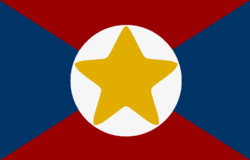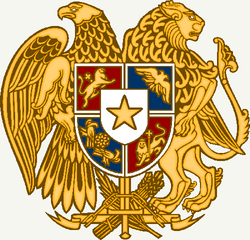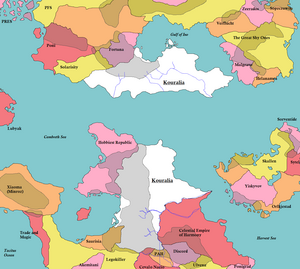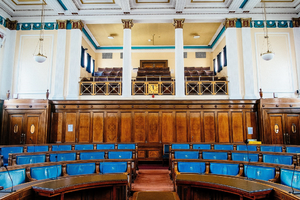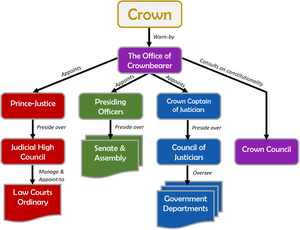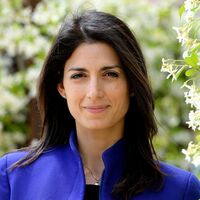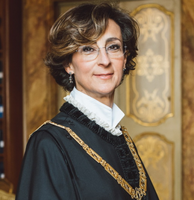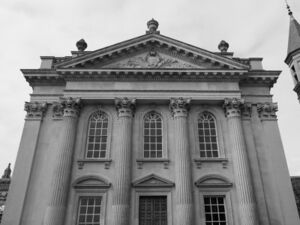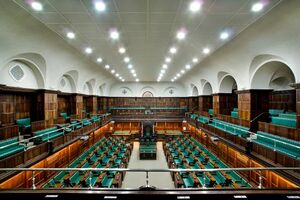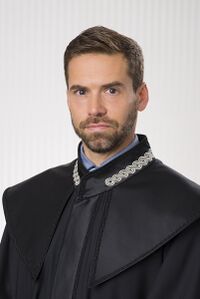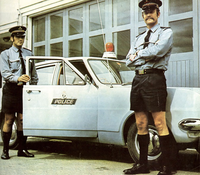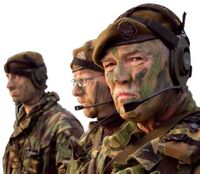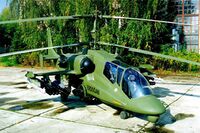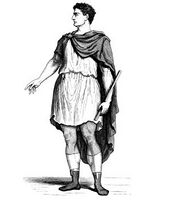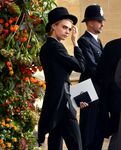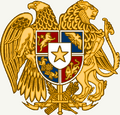Kouralia
This article is incomplete because it is pending further input from participants, or it is a work-in-progress by one author. Please comment on this article's talk page to share your input, comments and questions. Note: To contribute to this article, you may need to seek help from the author(s) of this page. |
| The Crown Union of Kouralia | |
| Flag of the Crown Union | |
| Anthem Heart of Red | |
| National Words Þeri Onore, Gyustysia ont Þe Curune | |
| Capital City | Kurton |
|---|---|
| Largest City | Chyricfriþyning |
| Ethnic group | Human 82.5% Fae 18.5% |
| Languages | English High Kouralian |
| Demonym | Kouralian |
| Governing Structure | |
| Bicameral Westminster-Style Constitutional Monarchy | |
| Queen | Alyxandra Campbell |
| Captain of Justiciars | Sir Barynel Caeryn |
| Justiciars' Court | |
| Noble Assembly | |
| Kouralian Senate | |
| Population | |
| Total (2015 Est.) | 1,079,000,000 |
| Increase | 0.6% per year |
| Total Area | 3,510,721 km2 |
| Population density | 307.3 per km2 |
| Date | dd/mm/yyyy |
| Dialing Code | +319 |
| Internet TLD | .Kour |
| Coat of Arms of the Crown Union | |
Kouralia, officially the Crown Union of Kouralia, is a human-majority country located in Western Mystria, straddling the Hobbiest Straits between the island continents of Norstralia and Borealia in the area formerly known as the Pony Lands. Approximately half of Kouralia by territorial area is based on each continent, though approximately 60% of the population resides in on Norstralia. The Norstralian part of Kouralia is bounded by the Gulf of Ino to the North and East, the Hobbiest Straits to the South, and borders Fortuna and Hippocratia to its West. The Borealian part of Kouralia primarily borders magic-blasted and inhospitable wastelands known as the Forynthry, though it has coastlines of the Hobbiest Straits to the North and the Cambreth Sea to the West, and does border some functioning nations.
Kouralia is a federal, inanimatocratic constitutional monarchy with a democratically elected Senate, where authority to govern is derived from the concept of a physical object rather than its wearer. Kouralia's Central Coronial Government is predominently based in its capitol city of Kurton in the Norstralian half of Kouralia.
Kouralia's population is one with a sizeable human majority, though there are minority populations of both indigenous werewolves, Fei Folk, and undead, and also of immigrant species such as Ponies, Beastlings, and Elves. Magic use is common in the nation, though it is heavily regulated due to historical fears of a Thaumocracy or Feiviocracy, and it has never approached the prevalence of other nearby states such as D'hɑlbrisir.
History
See Also: History of Kouralia
For many millennia the Kouralian Peninsula had been populated by human beings, fae and demi-fae. However, despite there being a multitude of states extant on the peninsula in its history, the only ones which are regarded as 'predecessors' to the Second Royal Union are those with the city of Kurton as its capital. Other states generally were originally subsumed as Imperial Provinces, before becoming part of Kouralia proper rather than seen as separate administrative districts.
The first example of a predecessor state to the current Second Royal Union of Kouralia is regarded as the republican City of Kurton which was founded in the 8th Century BCE, probably around 750 BCE. At the mouth of what is today the Reðuynyc River within the fertile Reðuynyc Valley, the City of Kurton was more-or-less protected from extreme outside aggression, and had sufficient abundance of resources to expand in magnificence. In the 4th century BCE a war between the City of Kurton and fellow neighbouring states of the Kouralian League Defense pact engaged in a 'civil war', predominantly to decide which between Kurton and the city of Rheðuyn would lead the league. In 338 BCE Kurtonian soldiers sacked Rheðuyn and the other states of the League were absorbed into the Kouralian Republic. Over the next 200 years the territory of the Republic expanded greatly and it rapidly became the foremost power in its area of the peninsula. In 120 BCE the rising power of the appointed high priest over the last two centuries saw the ostensibly Senate-appointed Oylacunin, or 'Noble King' of the Pagan Kouralian religion be de facto the absolute ruler of Kouralia.
This theocratic rule ceased after the Imerian Invasion in the 3rd Century CE when Sebastos Camhaoil, Commander of the Armies of the North, deposed the last Æðelcyning and became High King of Kurton.
As Kouralia expanded and the beliefs of its religion developed and experienced a reformation, conflicts occurred. Due to the close links between the Kouralian Church and the political power, the eventual schism resulted in a splitting of the Kouralian Empire into two nations by 1071: the Eastern Kingdom of Kurton and the Western Altonian Empire. Between 1200 and the 1680s the power of Kurton waned on in their Homelands, but grew in the Southern continent of Borealia where established trading settlements had grown to be provinces in their own right, and militantly expanded all the way to the borders of Discord's Realm in the South. In the late 18th century expansionist Kurtonian policy saw non-aligned nations within the Homelands becoming protectorates, puppet states, and finally provinces of the Kurtonian Empire while Altonia similarly conducted an attempt to prevent non-aligned states from being subsumed into Kurton's hegemony.
From 1790s to 1815 the invasion of Chieti by Altonia resulted in conflict between the two powers spilling out into open warfare, that concluded only with the surrender of Altonia and its absorption into the First Royal Union of Kouralia. Kurton (and then Kouralia) continued to become more and more Constitutional in terms of the authority wielded by the Crown until in 1963 when, following an incredibly deep recession the Chief of the Opposition in the Senate (and former Chief of Military Staff) launched a successful coup and deposed the monarch and lawful government. Immediately appointing himself temporarily 'August Father' of the nation to repurpose a historical republican title for the dictatorial commander-in-chief appointment in times of crisis, he established a faux-republican dictatorship while the surviving monarchists were either imprisoned and executed or fled to exile.
The Kouralian New Republic was destroyed following the Millenial War between 1998 and May 2001, resulting in the restoration of the monarchy in the new Second Royal Union of Kouralia and the execution of the new August Father: who was unsurprisingly a blood relative of the first August Father. First brought back as a summary measure, in 2002 the newly elected and empowered Senate voted to restore new constitutional authority to the Campbell family as monarchs and bearers of the Crown's Authority.
Due to the lack of enforced speciesist discrimination and sapient rights abuses since then, Kouralia has seen increased acceptance and involvement on the international stage.
Geography
Location
Kouralia is an immense nation with two main territories straddling both the continents of Norstralia to the North (Kouralia Proper) and Borealia to the South. They are separated by the Hobbiest Straits, which is a major waterway for seaborne traffic between Mystria and the Southern Pony Lands. On 'Kouralia Proper' is functionally a large peninsula which covers most of the Southern coast of the continent, and limits access to the Gulf of Ino. That of Kouralia on Borealia broadly separates the former Celestial Empire of Harmony to the East, known as Forynthry-Oryens in High Kouralian, and the remnants of the Hobbiest Republic Empire to the West (now Forynthry-Boreous). To the South is, among other nations, the wasteland formerly known as Montesardo-East Adanzi (now Forynthry-Auster), the hostile rogue state of the Realm of Discord, and Shrilland.
Due to its position, Kouralia claims de facto rights to the Gulf of Ino, aside from the territorial waters of, and international waters endeavours of other nations bordering the Gulf. It is extremely wary of and greatly opposes any attempts by foreign states to influence or operate within the Gulf of Ino. The Royal Union assumes a similar ownership of the waters surrounding the former Hobbiest Republic Empire, however this is primarily due to Kouralia's role in maintaining the secure perimeter surrounding the wilderness.
Climate and Terrain
Due to the size of Kouralia, its climate and terrain varies immensely. The islands and mainland approaching the North of the Homelands territory are very tropical alike the Caribbean. The land below there and to the West rapidly becomes a Mediterranean climate with green rocky mountains. Across the straits, the Borealian part of Kouralia generally has a temperate oceanic climate, though there are some Alpine areas (especially in the Mountains toward the South), and the hellscapes of Forynthry across the borders do tend to leak to an extent, and affect natural Kouralian flora and fauna in the Marches.
Administrative Divisions & Local Authorities
Kouralia is divided into three principal levels of administrative sub-divisions. The largest of these is the Region, followed by the Province and then the Municipality. Each of these has responsibility for, and exercises particular responsibilities when it comes to local Government. In spite of these local governments, Kouralia is a unitary state where central Coronial power is absolute over the constituent sub-divisions.
At each administrative division, there are four main elements to the local authority:
- The Local Government Executive is the individual personally responsible for overseeing the local government department.
- The Locak Government Executive is supported by a Local Executive Committee that is selected by the Head of Local Government and will be responsible for various delegated portfolios.
- The Local Government is held to account by a Local Government Assembly which also acts as a sub-national legislature for the purposes of any secondary legislation and various constitutional powers.
- The local government will usually be supported by various salaried staff, ranging from bureaucratic administrators to regulatory inspectors and service providers.
Most areas in Kouralia are covered by both a Province and also a Municipal Authority, both of which are subordinate to the Regional Governate. However, some areas have started to combine the administrative responsibilities of the Province and the Municipality into a single government body referred to as the Provincial Municipality. Provincial Municipalities tend to be areas that both require provision of Provincial-level services, but which cannot easily be divided into Municipalities or where one or the other level of government is believed to be inefficient. This is most common in large cities, for example the City of Kurton Special Capital Province which is also outside of the control of any Regional Governate. Another unique area is the Palatine-Principality of Rheðuyn which exercises the three levels of local government with special autonomy to exercise various other functions of the Coronial Authority.
| Ordinary Municipality | Provincial Municipality |
|---|---|
| The Coronial Union | |
| Regional Governate | |
Provincial Council
|
|
Municipal Authority
|
Provincial Municipality
|
Local Ward
|
Local Ward
|
Regions are led by a Directly-elected Regional Governor, who heads a Regional Governate. The Governate consists of both of the full-time employees that carry out local government functions, and the Governate Council of Governate Assessors. The Assessors are appointed by the Governor and serve until his term ends, he resigns, or they are dismissed. The people of the Region are represented by the Regional Assembly that has responsibility for scrutinising the work of the Governate, holding the Governor to account for its effectiveness and efficiency, and representing the interests of their local constituents. Governate Assessors do not have to be members of the Regional Assembly, but if they are then they must suspend voting for the length of their appointment.
Provinces are led by a Provincial Steward who is invariably the head of the majority party or majority coalition in the Provincial Assembly, which is the corresponding sub-national legislature. The Steward acts as the chairperson of the Provincial Council, and appoints Provincial Assessors that serve at their pleasure. The Provincial Assessors cannot be members of the Provincial Assembly, and if they accept appointment they are considered to have resigned.
The Province is also overseen by the Provincial Prefect who acts as the Coronial Government's representative in the area. They are responsible for overseeing the effectiveness and efficiency of local uniformed services, adjudicating in disputes between Local authorities, civil protection, immigration and upholding civil rights, and suspending local government officials in the event of failure to exercise their duties. The Provincial Prefect is a Coronial Officer who is a career Clerk Coronial, usually of the 'Principal Executive Officer' grade.
Municipalities are led by a Mayor who is either elected by a college of the Municipal Aldermanry or, in the case of a Provincial Municipality, is directly elected by the people. The Municipal Council consists of those Aldermen that are voted from among their number or, in the case of a Provincial Municipality, selected by the Mayor to have governing responsibility for a particular portfolio area.
Central Coronial Government
The Coronial Union is a constitutional monarchy of the 'Westminster' style in which the Crown has absolute legal authority. Unlike many monarchies however, the authority is legally vested in the physical object of the Crown and the authority to exercise its various powers are vested in particular officials, referred to as the Coronial Wardens. As head of state the Crownbearer of Kouralia heads a tripartite government consisting of the Executive, Legislature, and Judiciary, whilst being advised by the Crown Council. The relationship between these branches of government is set out in the Twelve Statutes-Principal of Kurton of 2001.
Twelve Statutes-Principal
See Also: Statutes-Principal
The Twelve Statutes-Principal of the Statute of Kurton of 2001 form the Constitution of Kouralia and set out the division of Coronial authority between the three branches of Government and the person of the Crownbearer. Whilst it is a core principle that any Statute made by one Senate can be amended or unmade by a subsequent Senate, the First Statute-Principal codifies the means of amending all Statutes-Principal as through the unanimous assent of the Coronial Wardens. The remainder of the Statutes-Principal go on to set out the legal foundations of the Post-Republican Era of Kouralian Government, the Second Coronial Union.
| Statute-Principal | Title | Statute-Principal | Title |
|---|---|---|---|
| 1st | On Statutes-Principal, and Amendment Thereof | 7th | On the Crownbearer, and the Authority Thereof |
| 2nd | On Citizens & Residents, and Duties Thereof | 8th | On the Crown Council, and the Authority Thereof |
| 3rd | On Citizens & Residents, and Rights Hearth | 9th | On the Crown Court, and the Authority Thereof |
| 4th | On Citizens & Residents, and Rights Abroad | 10th | On the Speakers-President, and the Authority Thereof |
| 5th | On Feikind and Not, and Relations Betwixt | 11th | On the Prince-Justice, and the Authority Thereof |
| 6th | On the Crown, and the Authority Thereof | 12th | On the Crown-Captain, and the Authority Thereof |
Crown
See Also: High Crown of Kouralia, Crownbearer, Crown Council, Coronial Wardens, Royal Households of Kouralia, House of Campbell
The High Crown of Kurton, or Kynessym Kurtonyc in High Kouralian, is the font of all legal authority within Kouralia, and notionally holds absolute authority. Practically speaking, however, it is exercised in commission. Each of the Coronial Wardens holds the authority to exercise particular powers at their own discretion or on binding advice from other officials. The authority is specifically derived from the High Crown itself rather than the monarch, who is known as the Crownbearer, or Kynessym Kantaasym in High Kouralian. Prior to the Republican Era, significantly more power was vested in the person of the Crownbearer which had been a hereditary office since the Imerian Crisis of the 3rd Century. This increase in power had been gradual but persistent for over 1,500 years, and the Second Kouralian Republic only resulted in even more centralisation of authority into the figure of the President.
Following the Millennial War, the Committee to Restore the Crown established the Twelve Statutes-Principal to ensure a fairer distribution of authority that had checks and balances on one person possessing too much power. The House of Campbell was restored to the role of Crownbearer with a new check requiring the Crown Council to assent to the accession of the new Crownbearer, with a specified process to follow if the Crownbearer-Designate was not selected.
Most of the authority wielded by the Crownbearer may only be exercised on the binding Executive Advice of the Crown-Captain of Justiciars, or the Justiciar they allocate responsibility for it. This includes declaring war, issuing pardons and commuting sentences, speaking on behalf of the nation, and knighting or ennobling people. Other powers including making certain appointments to the Crown Council, assenting to proposed laws, dissolving the Senate and Assembly to cause an election, acting as commander-in-chief of the armed forces, representing the nation in foreign affairsas its foremost ambassador, and appointing various officials following nomination of a candidate by other governmental bodies.
The Crownbearer is advised on the exercise of their powers by the Crown Council, or Kynessym Konſylyoræ in High Kouralian. This is a combination of appointees serving at the pleasure of the Crownbearer, ex officio serving government figures from all three branches, and some former office-holders. The advice of the Crown Council is not binding unlike Executive Advice, however it is expected to give honest and insightful counsel on whatever matter it meets to discuss. In matters of succession, the Crown Council is also responsible for selecting and appointing the Ynterrecæ, and acceding to the Crownbearer-Designate's accession to the Crown.
HM Sir Alyxandra Camhoail
CrownbearerSir Barynel Caeryn,
Crown Captain of JusticiarsLæyla Kyryl,
Speaker-President of the SenateLord Tor Solynæ
Speaker-President of the AssemblySir Eryka Altæryama
Prince-Justice
Legislature
See Also: Senate of Kurton
Kouralia has a bicameral Legislature: the Lower House of which is the directly elected Senate of Kurton and the Upper House of which is the part-hereditary Noble Assembly. The Senate is responsible for writing proposed Statutes, while the Noble Assembly ostensibly edits them to ensure they are justiciable before sending it to the Crown to become law. Collectively they are also responsible for holding the Executive branch of government to account.
Each of the houses is overseen by its Presiding Officer, with the Speaker-President of the Senate of Kurton being superior to the Most Noble Speaker-President in the same way the Senate is itself superior to the Noble Assembly. The Presiding Officers are Coronial Wardens, and exercise the Crown's authority to set the schedule within their house, allow representatives to speak, and discipline representatives who sit in their house. They are responsible for ensuring business in their house is conduct in a civil fashion, and for ensuring the security of both their house itself and the representatives who sit in it - with the Speaker-President of the Senate of Kurton being responsible for the overall security of the Legislative Estate.
The Senate of Kurton numbers five hundred Senators due to the sacredness of the number 5 in the Kouralian national faith. Senators are directly elected in a number of districts nation-wide by their local constituents, and are expected to both serve their local constituents and serve the nation as a whole when conducting business. Senators are usually members of a particular political party which assists them in coordinating and funding campaigns, though they can run and be elected independent of the influence of a Political party. The leader of the political party or alliance that holds the majority of seats in the Senate is nominated by a vote of the whole house to become the Crown-Captain of Justiciars. The Senate is principally responsible for proposing and writing draft legislation, and redrafting it at the request of the Noble Assembly as part of the Process of it becoming a Statute. In addition to this, Senators scrutinise national issues and Government activity through various Committees. Currently the Senate has a majority coalition of the Bonyas aþe’Coralyvienas and the Red Nationals Party, with the National Royalist Party leading the Opposition.
The Noble Assembly numbers one hundred Noble Electors, who are divided up into three main categories. Firstly, the twenty foremost Princes of the Union are entitled to sit in the Assembly as hereditary members, and when their title passes upon their death, so too does their right to speak and vote in the chamber. Secondly, a variety of senior public sector executives are granted the right to sit in the chamber by virtue of their position - serving ex officio. This includes the five Lords of War of the Armed Forces, the five members of the High College of the Faith, the Lord Mayor of Kurton, and four of the seniormost members of the Judiciary. Finally, the Crownbearer is entitled to appoint five people to sit in the Noble Assembly at their pleasure. The remaining sixty individuals are those honoured by the Government of the day with an Executive Lordship which is an honour bestowed by the Crown on Executive Advice. These individuals serve on a matter of seniority, with the oldest serving Nobles relinquishing their right to speak and vote in the Chamber when replaced by a new appointee - though they retain their title for life. A Government may only appoint up to five Executive Lordships per year, ensuring that it would take three full terms in office before the entire chamber were stacked with that party or alliance's appointees. The Noble Assembly scrutinises proposed legislation drafted by the Senate, and has the right to propose changes up to three times before being required to give assent to the bill and send it to the Crown. In this way it is meant to act as a barrier to populism, while the Crownbearer's right to refer proposed legislation to the Crown Court and to Referendum guards against unconstitutionality. Like Senators, Noble Electors serve on committees and scrutinise the Government's efficacy.
| Senate of Kurton | Noble Assembly |
|---|---|
Bonyas aþe’Coralyvienas: 244 seats Nationalmen's Party: 55 seats National Royalist Party: 94 seats Popular Levellers: 48 seats Popular Unionists: 41 seats Libertarian Party: 8 seats Altonia Afore: 5 seats Chietan Indep.: 1 seats Independents: 4 seats |
Current Captaincy's Electors: 20 seats Preceding Captaincies' Electors: 39 seats Lords of War: 5 seats Noble Lords Collegiate: 5 seats Noble Lord Maior: 1 seat Noble Lords Togate: 4 seats Noble Lords Coronial: 5 seats Hereditary Princes: 20 seats |
Judiciary
See Also: Magistrates & Advocates of Kouralia, Crown Court
The Judiciary of Kouralia refers to the law courts responsible for adjudicating legal disputes and interpreting the law written by the Legislature in practice. The Judiciary also refers to the magistrates who are empowered to make such judgements as lesser Coronial Officers. The Courts of Kouralia are divided into the Law Courts Ordinary and Extraordinary, with each division having various further distinctions. The head of the Judiciary is the Prince-Justice, who is also a Coronial Warden. They are responsible for ensuring the independence of the judiciary, for holding the other branches of the government to account in line with the law, and for internally regulating the judiciary. This function is usually carried out in commission with the Judicial High Council which the Prince-Justice presides over. The Judicial High Council is chaired by the Prince-Justice by virtue of his position, with the Principal President of the High Court of Justice-seat and the President of the Guild of Advocates also sitting on it ex officio. Ten Judicial High Councillors are elected by Inferior Magistrates, two by Superior Magistrates, four by advocates. The remaining eight High Councillors are lay-members without legal qualification, selected by the Senate of Kurton in a vote of the whole chamber.
The Law Courts Extraordinary refer specifically to those courts which are outside of the scope of the Judicial High Council. This includes the Courts Martial, the Admiralty Court, and the Crown Court. The former is regulated internally by the military, and is only responsible for military discipline matters - any serious criminal charges that fall outside its authority are passed to an Ordinary Law Court. The Admiralty Court is responsible both for civil and criminal maritime matters - including matters of slavery and piracy. Finally, the Crown Court, or Kynessym Kuryæ in High Kouralian, acts as a supreme constitutional check as well as carrying out various ancillary functions, and is presided over by the Crownbearer in most business.
| Civil Courts | Criminal Courts |
|---|---|
| Superior Courts | |
| High Court of Justice-seat | |
Appellate Court of
Preture & Tribune-in-Eyre (Civil Division) |
Appellate Court of
Preture & Tribune-in-Eyre (Criminal Division) |
| Subordinate Courts | |
Collegiate Tribunal
|
Preture aþ'Aſsyse
|
Collegiate Tribunal
|
Shyrræval Preture
(Solemn Sitting) |
Summary Tribunal
|
Shyrræval Preture
(Summary Sitting) |
The Law Courts Ordinary are divided up into the Inferior Courts, and the Superior Courts. The former are trial courts while the latter are appellate courts. Their work is divided up into two types of law - civil and criminal. Civil Law courts, known as Tribunals, deal with civil wrongs, and disputes between individuals or companies. Criminal law courts, known as Pretures, deal with wrongs against society that have been defined in law as criminal offences and therefore are subject to a criminal sentence if one is found guilty of it.
The Subordinate Courts have two grades depending on the severity of the matter under consideration. In the civil law track, a Summary Tribunal consists of a single Magisterial Assessor and decides on disputes with a financial value of less than 10,000. A Collegiate Tribunal consists of three Magisterial Assessors and both hears more serious claims in the first instance as well as hearing appeals from the Subordinate Tribunal. In the criminal law track, there are two grades of subordinate court. The Shyrræval Preture is responsible for hearing minor cases. In a so called Summary Court, a single Shyrræval Magistrate summarily hears the most minor of cases - often without a fully qualified advocate on the part of the defence. These are usually administrative matters such as traffic tickets, and can only result in financial sanction. In a Solemn Court a bench of three Shyrræval Magistrates hear more serious allegations that can command a maximum of ten years in prison on a guilty verdict - and the defence has the right to an Advocate funded publically. In addition, a Preture aþ'Aſsyse consists of three Coronial Magistrates and six Lay-Justices and can impose sentences of up to life imprisonment. It is responsible for hearing cases related to most serious crimes as well as appeals from the Shyrræval Preture, and all Defendants must be represented by an Advocate by law.
The Superior Courts have two grades - the Appellate Court of Preture & Tribune-in-Eyre and the High Court of Justice-seat. The Appellate Court of Preture & Tribune-in-Eyre is a single Court, but which sits simultaneously in each Region as required. Benches of three Magistrates-in-Eyre will either address specific legal challenges raised by the parties in the case, or review the facts of the case again. In either case they can alter a civil judgement, or quash a criminal conviction, convict a Defendant, extend or curtail a sentence. A further appeal may be made to the High Court of Justice-seat in Kurton which can only consider the interpretation of the law when it comes to judgements of Subordinate Courts as it may not rehear evidence or retry either party. A hearing of the High Court consists of a bench of five Lords or Ladies Justice of Appeal. The High Court may amend civil judgements, quash criminal convictions, or order a re-trial. The High Court only accepts appeals where the grounds for appeal are clearly articulated in advance by the applicant so it can review their appropriateness. By default the High Courtwill hear any Subordinate Appeals relating to malfeasance by the Government, and would then direct the appropriate Appellate Court to carry out a retrial if necessary.
Executive
See Also: Kouralian Government, Crown Captain of Justiciars, Justiciars of Kouralia, Crown Adjutant Clerk Corps.
The Executive branch of government is responsible for running the Crown Union effectively and ethically, and efficiently in accordance with the Laws of the Senate. This it does in the name of the Crown, and with varying degrees of delegated authority that avoid the need of the Crownbearer to carry out the business of governance themselves. The Government consists both of the Government departments called Justiciaries made up of professional bureaucrats, and also of its elected Political leaders. This second part is referred to as a Captaincy, and each takes its name from its head - the Crown-Captain of Justiciars. The Crown-Captain is a Coronial Warden that is nominated in a vote of the Senate following an election, and therefore is invariably pre-determined to be the leader of the majority political party or alliance of political parties. The nominee is then appointed by the Crownbearer, whereupon they divide up the business of government into various portfolios and make nominations to the Crown by way of Executive Advice for Justiciars to head the departments responsible for executing policy in that area of business.
Following the 2017 elections, the current government of Kouralia is the 2017 Cæryn Captaincy under Sir Barynel Cæryn.
The executive branch of government has the authority to do many things required to run the country on a day-to-day basis - and through Executive Advice can require the Crownbearer to exercise their powers in particular ways too. The executive also has a presumption of precedence in proposing legislation for discussion and voting in the Senate over laws proposed by other Senators. Indeed, over 95% of time spent debating and voting on legislation in the Senate and Noble Assembly is spent on governmentally proposed statutes. However, there are various checks and balances against executive overreach. The Noble Assembly and the Crownbearer scrutinise proposed legislation before it becomes a Statute, while any person or organisation can - if their case has merit - make an application to the Crown Court to strike down a Statute in whole or in part as incompatible with the Statutes-Principal. Ordinary Courts and various tribunals can also hold the Executive to account, securing redress for citizens or communities wronged by those in power. Furthermore, the various Committees of the Senate and Noble Assembly regularly summons witnesses and data to conduct hearings and publish reports into the efficiency and effectiveness of the government of the day. Finally, on a personal level, the Crownbearer has weekly audiences with the Crown-Captain to be updated on the progress of the government in carrying out its manifesto and dealing with any identified issues.
In additional to the bureaucratic staff directly employed within the Justiciaries, the Government also provides direction to various apolitical professional agencies and organisations that support the working of the state. These organisations are not directly headed by a Justiciar, but their professional heads will report to one and take direction from them in a relationship defined in law to assure apolitical independence of decision-making. There are hundreds of such agencies, ranging from the Office of the Cartographer-General and the Grocers' Public Adjudication Board to the Central Coronial Archives and the Signals Information & Security Service. Some of the most visible of such executive organisations are the Kouralian Armed Forces, the Police and Prison services, and the Intelligence Services.
Policing and Prisons
See Also: Law Enforcement in Kouralia, Treasury Guard, Carcerial Guard, Service Police, Coalition of Policial Networks
Preventing and investigating criminal offences, maintaining public order, and apprehending suspected and accused offenders and people unlawfully at large is primarily the responsibility of local Territorial Watches, or Vygelas Astycus in High Kouralian. These are uniformed discplined services of sworn Constables employed full-time to enforce the law, with each Watch having responsibility for a particular gegraphic area. The Watches tend to number between 2,000 and 30,000 staff, depending on the population size of the administrative division they cover - which can range from a Province or two to a single Municipality in the case of large cities. Territorial Watches are responsible for the full-spectrum of law enforcement activities: from road traffic enforcement and community Policing, to tactical armed operations and major crime investigations.
A number of other organisations have a specialist role in Law Enforcement across the Coronial Union. This includes various Inspectorates that investigate administrative offences such as the RICE Inspectors, the Yronway Guard who provide security on the national rail network, and the Treasury Guard who lead, coordinate, and assist Territorial Watches on serious & organised crime, major crime, and national security investigations and operations.
Convicted Offenders can be sentenced to custodial terms of prescribed or indeterminate lengths at Prison establishments operated by the centrally-administered Carcerial Guard. These prisons are secure establishments with entry, exit, and activity within controlled according to central regulation and local Governance. Officers of the Carcerial Guard are sworn in as Constables within the limits and immediate vicinity of their establishment, and within the remit of any transportation operation they are employed with.
Kouralia is the founding nation of the international Coalition of Policial Networks and takes an active role in international cooperation in this field.
Intelligence Services
See Also: Kouralian Intelligence Community
As National Security is the responsibility of the Central Coronial Government, gathering information about threats to the Kouralian state and people is the responsible of the Four Statutory Intelligence Services. These four agencies have respective responsibility for one of the main functions of the old Intelligence and Security Agency:
- Executive Oversight, Vetting, Training and Record-keeping.
- Espionage and Counter-Espionage, including against non-state actors such as terrorist groups or organised crime groups whose activities threaten national security.
- Telephony and Digital information gathering and analysis to create Signals Intelligence.
- Grand Strategic military intelligence.
The Intelligence Services do not have any operational capability to act on information gathered beyond those officers responsible for installing or monitoring equipment, meeting covert human intelligence sources, or conducting surveillance operations. Where their domestic activities uncover national security offences then Special Branches of the Treasury Guard or local Territorial Watch will be responsible for intervening to protect the public, apprehend those responsible, and secure charges for relevant criminal offences. Where intelligence activities show a need for direct-action operations abroad, these can only be sanctioned by the Central Coronial Government and carried out by the military personnel.
Armed Forces
See Also: Kouralian Armed Forces, Royal Kouralian Army, Kouralian Royal Navy, Kouralian National Air Force, Provincial Militia
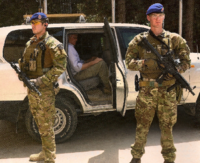
The Armed Forces are the three military services responsible for securing the nation, state, and people of the Coronial Union from domestic insurrection and foreign interference. They consist of the Army, the Navy, and the Air Force - respectively responsible for carrying out warfare on land, at sea, and in aeroplanes launched both from ships and from military airports. The three services are staffed by professional volunteers rather than through conscription, and due to the great social XYZ placed on public service recruitment is highly competitive. In addition to the full-time regular bodies, each service also has reserve components consisting both of recently resigned military personnel, and also of civilians who carry out part-time training and volunteer for active service in peace-time on an ad-hoc basis but who are all liable to be called up in times of crisis. The centrally-controlled Armed Forces are also supplemented by the Provincial Militas that answer to the President of their Region unless called up into a central Reserve force in times of crisis. These are part-time military reservists like the main service reserves, but with differing and significantly less strict procedures for ensuring their use to provide aid to local civil government during national disasters and other similar events.
In spite of the provisions for military aid to the civil power, there are extremely strict legal constraints about when it may be invoked and who-by. This is to ensure that legitimate coercive force is only used in the transparent policing framework that provides for citizens to seek redress for wrongs within the domestic context, and only where proportionate and necessary in a Foreign context.
Kouralia has experienced a long history of conflict that culminated in the formation of the First Coronial Union and Kouralian borders reaching their present-day limits which, combined with an ethos of professionalism and high levels of effectively allocated funding, has resulted in an international reputation for military excellence. In spite of this, however, Kouralia's use of its military against other nation-states has been minimal in the past hundred years. Beyond a small number of humanitarian and peace-keeping missions, its largest deployments since 1900 have been:
- The Millennial War civil war that restored the Monarchy between 1999 and 2001;
- The 31st Annual Demon War that saw Kouralian forces join an international coalition to close a Chaos Warp Portal that had opened in the neighbouring Hobbiest Republic, and;
- The Return of Tambelon that saw Kouralian forces join an international coalition to combat the return of the dark wizard lord Grogar.
Ongoing commitments include peace support operations in D'hɑlbrisir, and maintenance of the Forynthry Security Perimeters.
Economy
The Kouralian economy overall has strong performance across all sectors of the economy, however the government has been criticised recently for allowing domestic production to slip in the face of imported materials. Kouralia produces many precision engineered goods domestically such as cars and other machinery, however traditionally high-tech goods such as computers, phones and digital products are often sourced from abroad. The Kouralian arms industry is one of the major exceptions to this rule, with advanced domestic-produced vehicles, munitions and weapons systems overwhelmingly supplying the Kouralian Military, and also being a strong export sector.
Agriculturally speaking Kouralia is a net importer of food, however the nation does produce enough of its food to not be fully reliant on foreign foodstuffs and recent initiatives such as the 'Starred Tractor' have seen a national shift toward 'eating Kouralian.' Kouralian fishing fleets are a thing, but fish consumption is not a major part of the diet of many Kouralians and the vast majority of seafood consumed in Kouralia is likely imported if not locally sourced. Metals and minerals are drawn from the ground in vast quantities though the growth of this sector has been stunted in recent years due to imports, however sourcing of certain goods such as the luxury Chiaræn Marble have continued strongly.
In terms of manufacturing, Kouralia produces many highly engineered goods such as machinery, defence technology, automobiles, and both water and aircraft. Marble-shaping and carving is also a sizeable industry in areas where marble quarrying is a major employer too. The manufacture of goods with a thaumical aspect to their construction is a growing trend in Kouralia and is expected to grow further with the government's initiatives to increase thaumical involvement at all stages of the education system.
In terms of the Service sector, Kouralia has a number of financial institutions, trading groups, and other service-providing companies. However, these have yet to significantly break onto the national market.
Many professions in Kouralia are represented by guilds which generally act as interest groups and guarantors of quality for their members but are not mandatory for a license to trade. There is no requirement that a company or practitioner join a guild, and many professions lack an appropriate guild, but generally most tend to join the relevant guild. Examples of guilds include the Free Companies' Guild and the Guild of Watchmen.
The currency of Kouralia is the Ryal, divided into 50 Crowns or 100 Half-Crowns. The ratio is currently 1 Ryal to 1.31 NSD.
Demographics
Kouralia is a large and populous nation with roughly 1.78 billion residents, of whom the vast majority are citizens (whether by birth or otherwise), but which also includes permanent and temporary residents and illegal immigrants. This is currently growing at a rate of 0.9% per year according to the average birth rates in the last four years although population growth rates in the future are projected to decline due to declining Fertility and immigration rates. Despite this, the population growth rate is expected to remain net positive for the foreseeable future as immigration rises limit the impact of declining fertility.
The overall life expectancy is 81 years, which is roughly an average amongst developed nations. In the most recent census, roughly 40% of the adult population of Kouralia defined itself as belonging to a group included under the LGBT+ umbrella.
Approximately 83.4% of the population lives in cities and urban areas as of 2018, with the majority of those living in cities with populations above 100,000. Population growth in cities remains high at over 1% per annum. This expansion in cities has resulted in the creation of several major conurbations such as the Chyricfriþyning Megalopolis. Overcrowding in cities has become an ongoing concern, encouraging the development of mass transit and more space and energy-efficient housing designs than the conventional Insula community model.
Largest cities or towns in Kouralia
2015 Census | |||||||||
|---|---|---|---|---|---|---|---|---|---|
| Rank | Province | Pop. | |||||||
 Chyricfriþyning  Boccaþ Ino |
1 | Chyricfriþyning | Provincia Aþe’Chyricfriþyning | 40,140,000 |  Melusine  Bedausworth | ||||
| 2 | Boccaþ Ino | Kurton Ost | 31,500,000 | ||||||
| 3 | Melusine | Leightonia | 27,200,000 | ||||||
| 4 | Bedausworth | Altonian Highlands | 26,540,000 | ||||||
| 5 | Afallon | Chieti Sud | 25,600,000 | ||||||
| 6 | Ceorlsby | Frontier of Civilisation | 25,000,000 | ||||||
| 7 | Niniannous | Altonian Highlands | 24,900,000 | ||||||
| 8 | Kurton | Reiprovincia | 24,100,000 | ||||||
| 9 | Decari | Centros | 23,900,000 | ||||||
| 10 | Niniannae | Niniannae | 23,876,000 | ||||||
Fei
See also: Feivienas
The so-called Feivienas (otherworldly-folk) of Kouralia are the second main species group extant in the nation after the human majority, making up roughly 20% of the population. They are made up of a wide ranging collection of sub-species which are possessed of magical affinity, and even inherent powers unique to their species. The correct term in Kouralia is regarded as 'Fei' (both singular and plural), or 'Feivien' and 'Feivienas' (singular, plural) in formal wording. Many of these sub-species have their own formal names along with colloquial names derived from the term 'Fei'; as an example, Kouralian werewolves are correctly termed Lvpan Selenes (the Moon's Wolves), however they can be identified as 'Fei-hounds', though many would find the term offensive. Throughout Kouralian history other terms have existed for these types, including 'elves', 'others' and 'otherkin', and 'the folk.' In the present day though, these terms have fallen by the way-side. Furthermore, while 'elf' can be used to describe Feivienas in some minor dialects of High Kouralian, it only refers to the Quendi of Menelmacar in mainstream usage.
Despite being separate species, the thaumical nature of their divergence from homosapiens means that reproduction is possible without barrier. This produces off-spring known as demi-fei who will regularly experience greater affinity with conscious magic usage, greater longevity, and often residual influence of that species of fei's inherent magical qualities. The degree to which this is experienced will often depend on the degree of separation from the original fei's influence on the human's bloodline. Research has been done as to why the degree to which one is 'demi-fei' does not conform to or reflect current understanding of genetics, but is inconclusive. As with the prevalence and probability of magic affinity within humans, the magical element makes it difficult for conventional science to pin down.
Language
Most Kouralians are at least bilingual, speaking both Common and the historic High Kouralian language. This is due to extensive globalisation policies from the Tyrannic era which forced multilingualism at both primary and secondary levels of education in Kouralia, resulting in the present day a very common-fluent population. Other languages including Equestrian are common, with some such as Necrontyr, Quenya and Malgravean becoming more common over the last decade.
Religion
See Also: Æhrycreda
The Æhrycreda is the national religion of Kouralia, and has been for millennia. Organised worship and following of the traditions of the faith are evident since the founding of Kurton and other settlements within the area, and references to the deities and primary concepts of the faith exist before the founding of the Kouralian Republic. Strictly-speaking the vast majority of Kouralians follow the Æhrycreda in some way or another, as it does not preclude the existence of other divinities. In fact, the Æhrycreda teaches that other divinities are a certainty, but focuses on the worship of those relevant to its own faith. The visible manifestations of the Æhrycredan Pentatheon in Kouralian life, such as in the 31st Annual Demon War, preclude consideration that the religion is false, and account for the low atheism rate in Kouralia. Only 12.7% in the last census recorded not 'duly venerating' the Æhrycredan Pentatheon, while 61|% of Kouralians worship them exclusively.
Education
Education is divided into 'Principal Education,' and 'Further Education' by the Kouralian Government. Principal Education is provided from age 5 to 16, and Further Education is from age 17 and beyond both by Colleges and Universities.
Culture
Social Class
See Also: Kouralian Honours, Palatine Principality of Rheðuyn
While a democracy, Kouralia's functioning constitutional monarchy comes with a predominantly ceremonial nobility. Notionally there exists a hereditary Principality that equates to each Province, and the holders of which are entitled to sit in the Noble Assembly. Hereditary Lordships often largely equate to counties, hundreds, boroughs or other local authority areas, though the boundaries will have changed over time, and there are only some authority areas which have their own hereditary lordship. In addition to this there are 'Civil Lords' who are ennobled for life by the crown at the recommendation of the Government. These tend to be people who have served the public extensively, often as a retirement package for figures such as Chiefs of Staff in the Military, Permanent Secretaries in the Adjutant Clerk Corps, Praetors, and major figures from the private sector for whom knighthoods do not fully represent their contributions to society.
In addition to the Nobility, there is a class referred to as the Celareas (singular, Celarean) or 'Knights.' These can be 'Knights Bachelor' who are knighted by the Crown without regard to a particular order, or members of a particular chivalric order such as the Order of the Citadel.
Fashion
While casual clothes such as jeans and casual shirts are common in every-day life, Kouralian fashion tends toward formal dressing of one of two styles. Regardless of the style worn, Kouralian attire is usually unisex whether it be tunics or trousers and shirts worn.
- The Classical Style, as the name suggests, harkens to a modern interpretation of clothing worn in the Classical period of Kouralian civilisation, around the commencement of the common era. Because of this it is considered equal parts old-fashioned and folky by many adherents of the Modernist Style. It generally entails dress-like, collarless tunics known as tunicas with smooth upper halves, but which often transition at the waist to an accordion pleat ending mid-thigh. When belted, the tail is tied off adjacent to the buckle and allowed to dangle off-centre.
For summerwear these are generally thin and breathable, and are liable to show more skin with higher hemlines and with sleeves and necklines which retreat into thin straps. These tunicas are worn with ankle-height sandals which allow wear of sheaths for the Caltaryæ Feraa. In colder climates, thicker material is used while boots and thick ankle socks perform a similar function regarding securing the knife sheaths. These can be hooded, and may be work with a coat or a cloak in inclement weather. Hats are rarely worn, however circlets are common. The tunica is often embroidered, and may feature design features to enhance their visual appeal. The Classical Style is noted for its comfort and light weight as it is a single garment with footwear.
- The Modernist Style originated from the development of modern, traditionally male foreign fashion. Accordingly it is considered a passing fad and distressingly conventional by adherents of the Classical Style. It consists of button-up shirts worn with jackets and trousers, sometimes with neckties and always with dress shoes. Belts are secured by loops on the trousers, and are universally of leather. This differs from the proclivity to use cinctures and cloth when cinching the waist on a tunica.
While akin to formalwear worldwide, the Kouralian Modernist Style is generally more colourful: even formally colours such as purple, green and red join traditional blues, greys and blacks. Shirts and neckties are also brightly coloured - with the former rarely being coloured pastel if they are not white. Shirts can be worn with and without a necktie, but will always feature a rigid fold-down collar of some description. They may be worn with a waistcoat or corset in a traditional three-piece suit, or more casually with a waistcoat or corset alone. Suits are common both casually and in business situations, whether with a traditional suit jacket or a more formal tailcoat or spencer. More casually blazers or sporting jackets are worn with contrasting trousers. It is common for the Caltaryæ Feraa to be sheathed under a trouser leg in this style. In colder weather either coats or a cloak can be worn, and hats of many descriptions are common. Shoes are commonly worn in the monkstrap style.
Spencer jacket worn as casualwear. Formal tailcoat worn with cummerbund and top hat. Chestnut monkstraps without broguing.
These styles will cross together, such as a recent proclivity to Purist fashionistas will generally adhere to one style or another and may regard cross-styling such as a Spencer with a tunica as sacrilege, most Kouralian wardrobes will feature a collection of outfits from either style as appropriate. Formal parties will often indicate on their invitations which style is desired. The Kouralian Military has adopted both styles for its uniforms. Principally Service and Dress uniforms are of the Modernist Style, however many more ceremonial units such as the Citadel Guard Regiment wear classical tunicas with military accoutrements such as aiguillettes, swords and even decorated and sculpted breastplates and helms.
Marriage and Æfenlytya
Kouralia does not have widespread marriage, with only roughly 30% of the adult population choosing to marry. This is because Kouralia has traditionally had two forms of bonding: marriage, and the institution of Æfenlytya or 'Companionship.' Throughout the formative early stages of the Æhrycreda it was held that legal sharing of property and titles and bonding of families and factions was of importance. Thus a marriage in Kouralia is a legal process whereby a contract of marriage is drawn up to give one's partner increased rights over joint property. However, the Æhrycreda teaches that love and lust, and acting on those forces is a force for good in the world and a way of venerating the gods. Thus, the religious institution of Æfenlytya was formed from a more structured way of regulating unmarried lovers.
While marriage is between a Husband and a Wife (or Husband and Husband/Wife and Wife), the state of Æfenlytya is between a number Æfenle (non gendered, pl: Æfenlas), which are given gender as the Æfenlo and Æfenla (pl: Æfenlas) for male and female respectively. The state of Æfenlytya is purely religious rather than administrative and is acquired and lost through a religious ceremony conducted by a priest of the Æhrycreda. It was only recently in 2002 that 'Æfenlytya' was recognised by statute as a marital status for forms, between 'Marriage' and 'Single': it does not automatically confer any enhanced legal rights to the person or property of one's Æfenle. Both marriage and Æfenlytya are permissible as of age 16, but Marriage requires the consent of a legal guardian until the age of 18.
The presence of such an informal institution of intimacy in Kouralian culture is often seen as a reason for its greater openness and acceptance of promiscuity and sexuality than in cultures which have a more socially reserved faith such as Christianity. In 2015 studies showed that while 30% of the adult population were married, 74.5% recorded a state of Æfenlytya, including 29.7% of the 30% of the population which was married. This included 1.4% of the population in polyamorous relationships (i.e. an Æfenlytya with more than one person) however that does not count all individuals in the statistic: only each individual who is registered with more than one Æfenlytya.
Cuisine
Kouralian cuisine focuses on the idea of a single hearty main meal to the day which is cooked traditionally overflows with meat and side dishes. This can be consumed as breakfast, or at lunch or tea-time, where that will be termed 'dinner.' This traditional dinner will consist of a main dish of meat, which is supported by a side dish of vegetables and a possible side dish of starchy food such as bread or pasta. After this follows a sweet dish. Alcohol, generally wine, is consumed throughout that meal.
Traditionally the most common meat in Kouralia is pork, including gammon, bacon, ham, and in sausages. Beef, venison, veal, lamb, mutton, and game are also common, as is poultry. Fish is less so, unless close to the coast or in the North of the country. Lauryba is one of the national dishes of Kouralia and consists of dried cured meat, consumed as a snack. This can be of any meat but is commonly pork, beef or game. Another national dish is Testaroli, a pancake-like sheet made with chestnut flour which is cooked upon a skillet before being sliced into small squares or triangles and then prepared as if it were pasta. This is served with many
Meals which are not the 'Dinner' of the day will usually be smaller, and are often cold finger food such as salads and sandwiches.
Eating establishments can generally be divided into three categories. A restaurant is generally higher class and for the consumption of food. Eating is always at a table, and food is more expensive and there is a focus on the aesthetic of a dish. A tavern is less formal and generally focuses greatly on the consumption of alcohol - to the degree that most will have separate 'restaurant' and 'bar' areas where people can sit and eat, and stand or sit and drink. A Bar is a smaller establishment which is generally for the consumption of alcoholic or non-alcoholic beverages, and foodstuffs that can be eaten on the go.
Sports
Kouralia as a nation has a number of sports, and its national sport is denoted by law. Association Football is a common ballgame, however the msot followed sports are combat sports ranging from empty-handed events such as wrestling through to one-on-one swordsmanship and group 'battles.' The official sport of Kouralia is a combination wrestling and boxing event termed the Omniperio which is renowned for its violence and lack of rules. Flat-hand combat events generally feature matches of periods, and can be won through technical superiority and scoring of moves, or through simple knock-outs. Striking combat events such as boxing are common and different events will vary in terms of which zones may be struck and struck with, weight classes, and protection.
There are also a number of combat events involving weapons ranging from quarterstaff fighting through to swordsmanship with and without shields. Another sport is team-based combat which varies in terms of rules, weapons, and discipline requirements. The most common of these involves teams of armoured fighters attempting to defend and seize a crest from the opposing team's captain, and return it to their captain.
Public Holidays
Kouralia has a number of public holidays or Feryæ which are observed due to tradition and which typically result in a day or multiple days off of work along with other traditions. These occur throughout the year and have been formalised by the National Holiday Act 2013, which provides for which holidays necessitate either double pay for working, or a day off. The Kouralian calendar does not correspond to the Gregorian Calendar directly, however most Kouralians use the Gregorian calendar for business purposes, and it is only for the placement of certain holidays that the Kouralian calendar is used. Where one of these holidays falls on a weekend, the next following working day is pronounced to be a public holiday.
- On the day of the Hibernal Solstice and the day after, Kouralians celebrate the Yearsend by handing out presents and getting royally drunk. While it is slightly off the Gregorian 'New Year', it is used in lieu of this ceremony, and no public holiday is approved on the 1st of January or on the 25th of December whose festivals are mirrored by this celebration.
- On the 15th of March the Feryæ Salyæ is celebrated, to commemorate the concepts of Honour and truthfulness, and Justice and law. It is traditional on this day for the royal prerogative of mercy to be used ceremonially by both the Crown and each Provincial Governor to commute the sentence of a prisoner. The selection of which prisoner is to be freed for this ceremony is rigorous, and if none can be found who it is suitable to free, then a ceremonial faux prisoner is released.
- The Glorious 25th of May is a celebration of the restoration of the Monarchy to Kouralia and the end of the Millenial War in 2001.
- On the Estival Solstice and the day after, Kouralians celebrate the Demiferyæ or Half Festival, which marks half way through the year. This is generally celebrated with public parties in parks and streets which are subsudised and organised by local authorities: though road-obstructing street parties have been clamped-down on recently due to interference with emergency responses.
- On the 13th of September the Festival of the Fallen commemorates those of the Watches, Military, and civilian who have otherwise fallen in the pursuit of Honour, Justice, and Freedom.
- On the 14th of September the Feryæ aþe'Probatyo Vygelas celebrates the Kouralian Military and Guards, and is an occasion for military parades throughout many cities.
- On the 31st of October the Feryæ aþ'Amburbyum celebrates the purification of communities of evil and dishonour through public processions and rituals in the day, and at night the wearing of costume and partaking in communal games to represent the early return of dishonour: a remnant of a reminder to be ever-vigilant about evil.
- At some point throughout the year each Province is authorised to hold its own Provincial Day as a public holiday, though these are generally taken to be paid-double within that Province for inter-provincial business (e.g. a call-centre) rather than for days off to be taken, except, for example, for local retail work.
